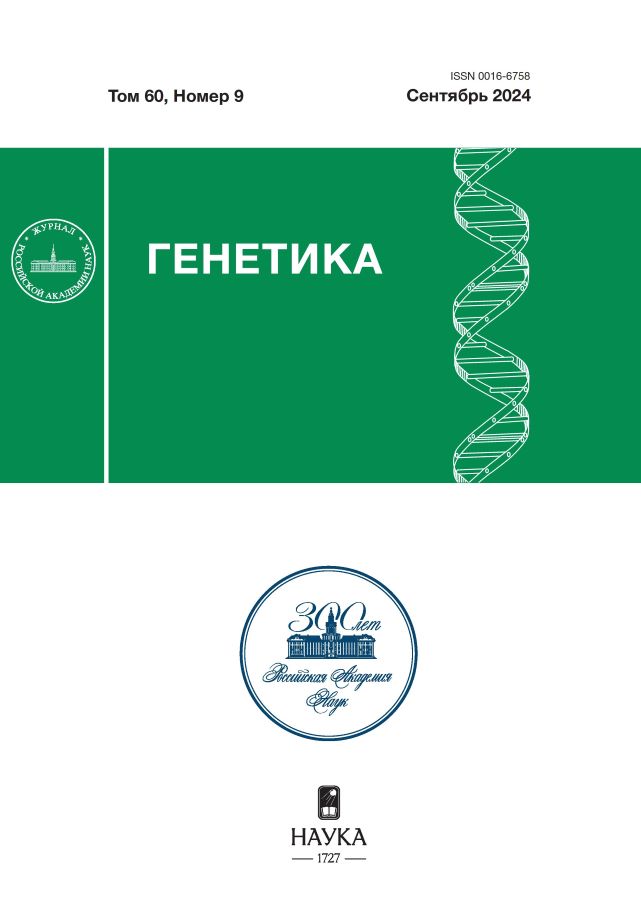Nematode Caenorhabditis elegans as an object for testing the genotoxicity of chemical compounds
- Authors: Abilev S.K.1, Machigov E.M.1, Smirnova S.V.1, Marsova M.V.1
-
Affiliations:
- Vavilov Institute of General Genetics Russian Academy of Science
- Issue: Vol 60, No 9 (2024)
- Pages: 10-15
- Section: ОБЩАЯ ГЕНЕТИКА
- URL: https://rjdentistry.com/0016-6758/article/view/667194
- DOI: https://doi.org/10.31857/S0016675824090027
- EDN: https://elibrary.ru/afavql
- ID: 667194
Cite item
Abstract
In connection with the requirements of International and national organizations to comply with the principles of humanization of experiments using animals, alternative test systems are being searched and tested to replace animals in ecological, toxicological and genotoxicological studies. One such alternative may be the nematode Caenorhabditis elegans, which has a biotransformation system of chemical compounds similar to the mammalian system. The genotoxicity of the pesticides paraquat and the antibacterial agent furacilin was studied on C. elegans by horizontal gel electrophoresis of total DNA in order to assess its integrity. It has been shown that paraquat in concentrations of 0.01 to 0.05 mol/l and furacilin f in concentrations of 0.0001 and 0.00025 mol/l, caused DNA breaks in nematode cells. The antioxidant N-acetylcysteine at a concentration of 0.01 mol/l reduced the genotoxicity of both compounds.
Full Text
About the authors
S. K. Abilev
Vavilov Institute of General Genetics Russian Academy of Science
Author for correspondence.
Email: abilev@vigg.ru
Russian Federation, Moscow, 119991
E. M. Machigov
Vavilov Institute of General Genetics Russian Academy of Science
Email: abilev@vigg.ru
Russian Federation, Moscow, 119991
S. V. Smirnova
Vavilov Institute of General Genetics Russian Academy of Science
Email: abilev@vigg.ru
Russian Federation, Moscow, 119991
M. V. Marsova
Vavilov Institute of General Genetics Russian Academy of Science
Email: abilev@vigg.ru
Russian Federation, Moscow, 119991
References
- Russell, W.M.S. , Burch, R.L. The Principles of Humane Experimental Technique. Methuen, 1959. London: Reprinted by UFAW, 1002: 8 Hamilton Close, South Mimms, Potters Bar, Herts EN6 3QD England. ISBN 0 900767 78 2.
- Kilkenny C., Browne W.J., Cuthill I.C. et al. Improving bioscience research reporting: The ARRIVE guidelines for reporting animal research // PLoS Biol. 2010. V.. 8. doi: 10.1371/journal.pbio.1000412
- Kousholt B.S., Præstegaard K.F., Stone J.C. et al. Reporting of 3Rs approaches in preclinical animal experimental studies. A nationwide study // Animals (Basel). 2023. V. 13(19). doi: 10.3390/ani13193005
- Leung M.C.K., Williams F.L., Benedetto A. et al. Caenorhabditis elegans: An emerging model in biomedical and environmental toxicology // Toxicol. Sci. 2008. V. 106. P. 5–28. doi: 10.1093/toxsci/kfn121
- Минуллина Р.Т., Фахруллин Р.Ф., Ишмухаметова Д.Г. Сaenorhabditis elegans в токсикологии и нанотоксикологии // Вестник ВГУ. Серия химия, биология, фармация. 2012. № 2. С. 172–282.
- Consortium (The C. elegans Sequencing Consortium) Genome sequence of the nematode С. elegans: A platform for investigating biology // Scienсe. 1998. V. 282. P. 2012–2018.
- Imanikia S., Galea F., Nagy E. et al. The application of the comet assay to assess the genotoxicity of environmental pollutants in the nematode Caenorhabditis elegans // Environ. Toxicol. Pharmacol. 2016. V. 7(45) P. 356–361. doi: 10.1016/j.etap
- Hartman J.H., Widmayer S.J., Christina M. et al. Xenobiotic metabolism and transport in Caenorhabditis elegans // J. Toxicol. Envir. Health. 2021. Part B. V. 24(2). P. 51–94. doi: 10.1080/10937404.2021.1884921
- Harlow P.H., Perry S.J., Alexander J. et al. Comparative metabolism of xenobiotic chemicals by cytochrome P450s in the nematode Caenorhabditis elegans // Nat. Sci. Reports. 2018. V. 8. P. 13333. doi: 10.1038/ s41598-018-31215-w
- Мачигов Э.А., Абилев С.К., Игонина Е.В., Марсова М.В. Изучение генотоксичности бета-пропиолактона с помощью Iux-биосенсоров E. coli и нематоды Сaenorhabditis elegans // Генетика. 2023. Т. 59. № 5. С. 507–516. doi: 10.31857/S0016675823040070
- Meneely P.M., Dahlberg C.L., Rose J.K. Working with worms: Caenorhabditis elegans asamodel organism // Curr.. Prot. Ess. Lab. Techn. 2019. V.. 19. doi: 10.1002/cpet.35
- Iyyadurai R., Mohan J., Jose A. et al. Paraquat poisoning management // Curr.. Med. Issues. 2019. V. 17. P. 34–37. doi: 10.4103/cmi.cmi_29_19
- Bus J.S, Aust S.D., Gibson J.E. Superoxide-and singlet oxygen-catalyzed lipid peroxidation as a possible mechanism for paraquat (methyl viologen) toxicity // Biochem. Biophys. Res. Commun. 1974. V. 58. P. 749–755.
- Fukushima T., Tanaka K., Lim H. et al. Mechanism of сytotoxicity of рaraquat // Environ. Health and Preven. Med. 2002. V. 7. P. 89–94.
- Onur B., Çavuşoğlu K., Yalçin E. et al. Paraquat toxicity in diferent cell types of Swiss albino mice // Nat. Sci. Rep. 2022. V. 12. Р. 4818. doi: 10.1038/s41598-022-08961-z
- Roldan M.D., Perez-Reinado E., Castillo F. et al. Reduction of polynitroaromatic compounds: Тhe bacterial nitroreductases // FEMS Microbiol. Rev. 2008. V. 38. P. 474–500. doi: 10.1111/j.1574-6976.2008.00107.x
- McCalla D.R. Mutagenicity of nitrofuran derivatives: Review // Environ. Mutagenes. 1983. V.5. P. 745–765.
- Anderson D. & Philips B.J. Nitrofurazone-genotoxicity studies in mammalian cells in vitro and in vivo // Food. Chem. Toxicol. 1985. V. 23. P. 1091–1098.
Supplementary files














